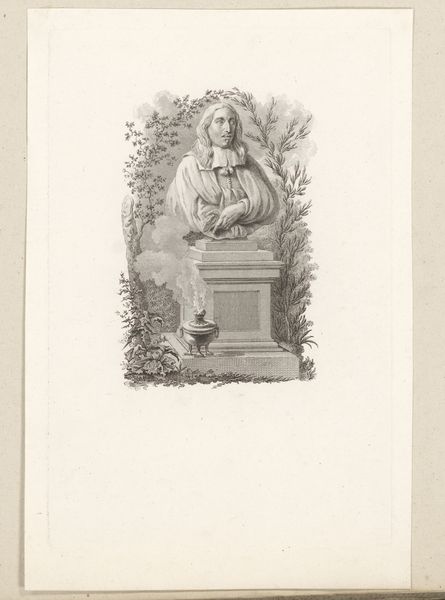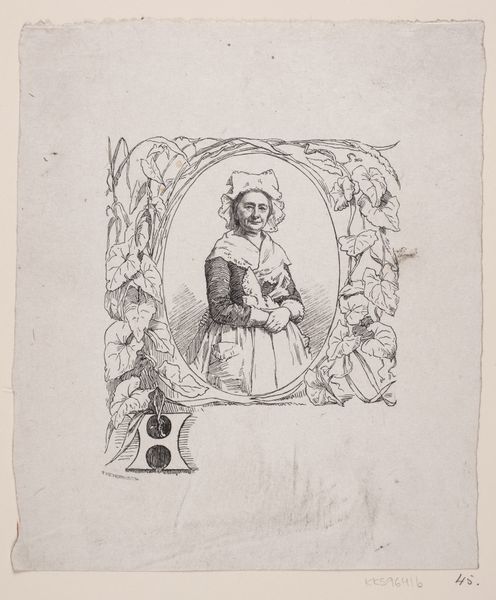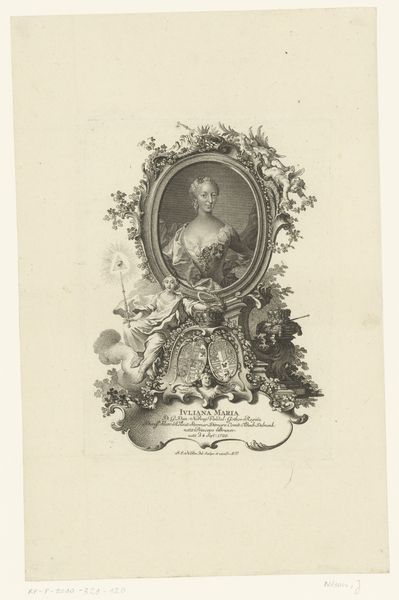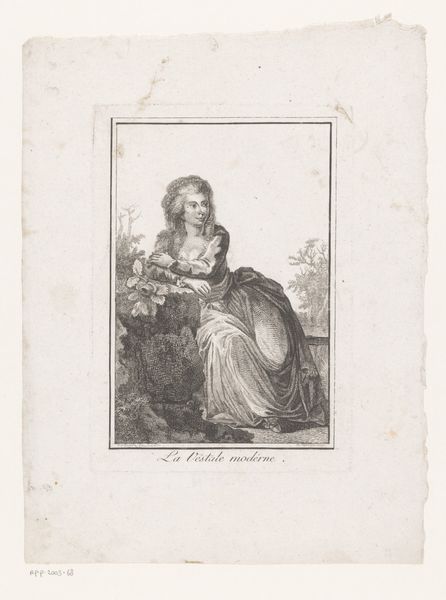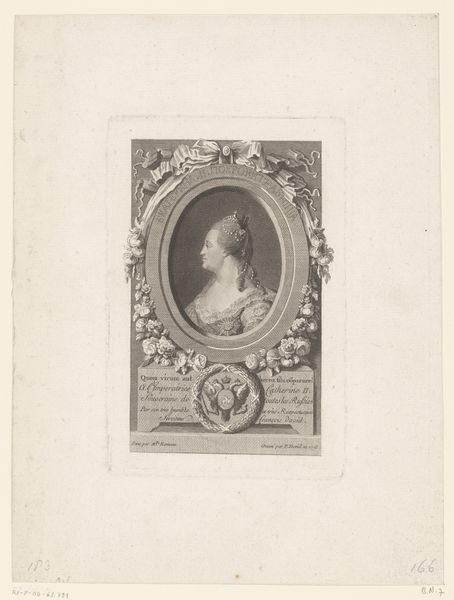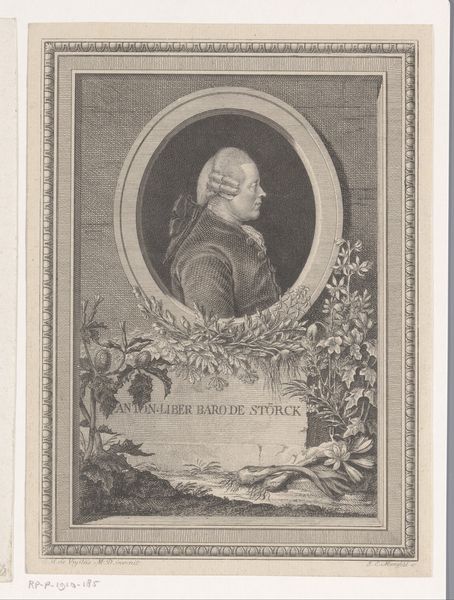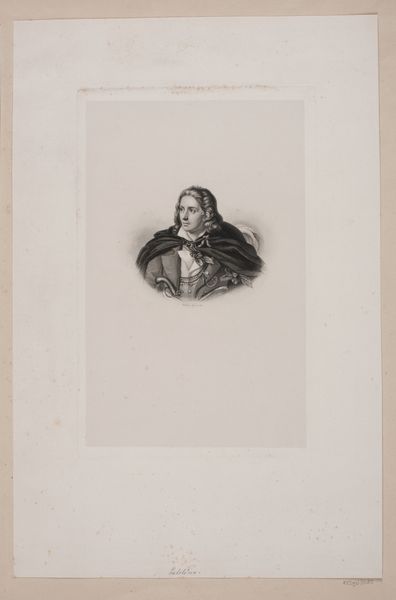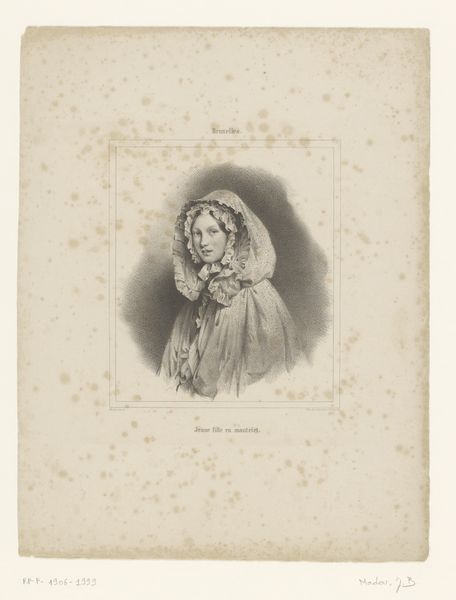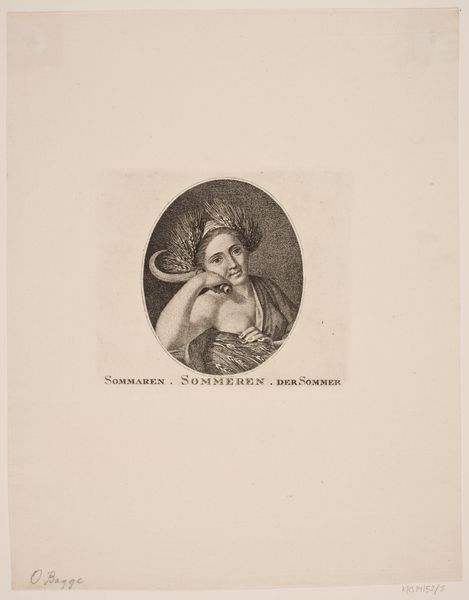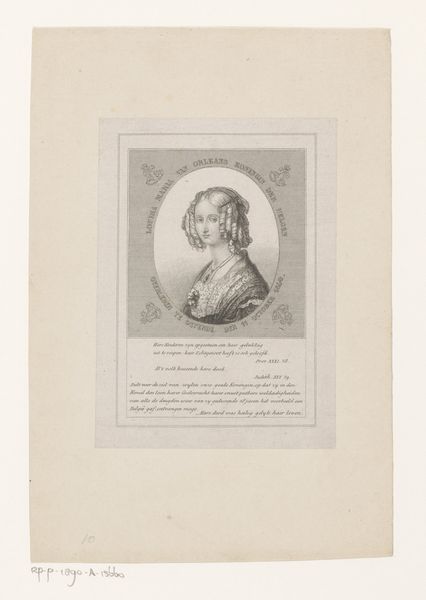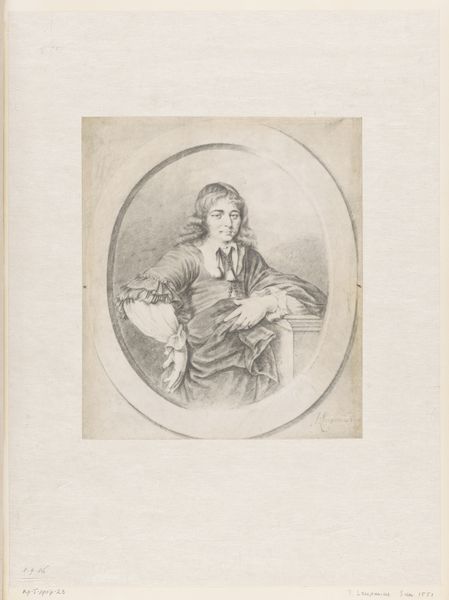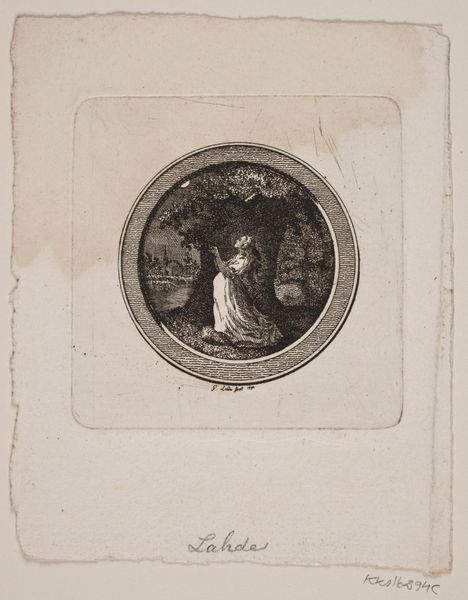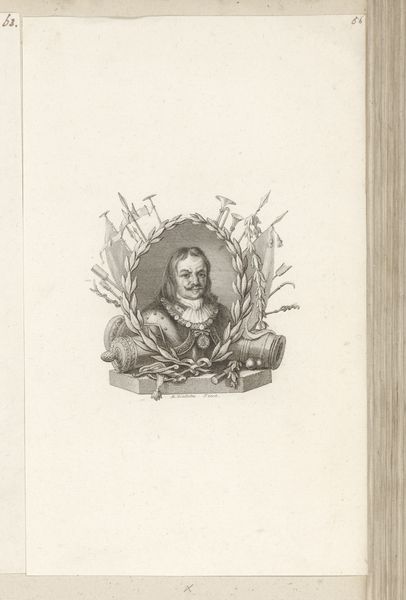
Dimensions: height 144 mm, width 92 mm
Copyright: Rijks Museum: Open Domain
This portrait of Johann Adam Wels was made with engraving by Paul Malvieux in the late 18th century. Engraving involves using a tool called a burin to incise lines directly into a metal plate, in this case, most likely copper. The quality of the engraving is crucial to its visual effect; the varying depth and density of lines create tones and textures. Look closely and you can see how Malvieux used these techniques to give a sense of depth to Wels's face and clothing, and to describe the fanciful landscape surrounding him. The resulting plate is then inked and printed, transferring the image onto paper. Think about the labor that went into this process: the skill required to handle the burin precisely, the time spent meticulously carving the design, and the physical effort of printing. Engravings like these were often produced in multiples, making art accessible to a wider audience. Understanding the material and process allows us to appreciate the skill involved and the social context of its creation, challenging any separation of fine art and craft.
Comments
No comments
Be the first to comment and join the conversation on the ultimate creative platform.
